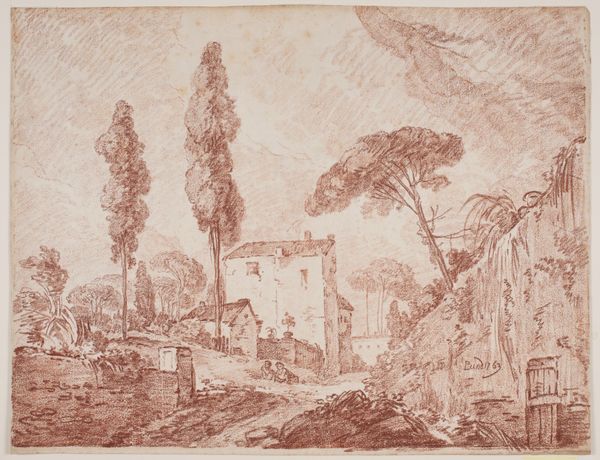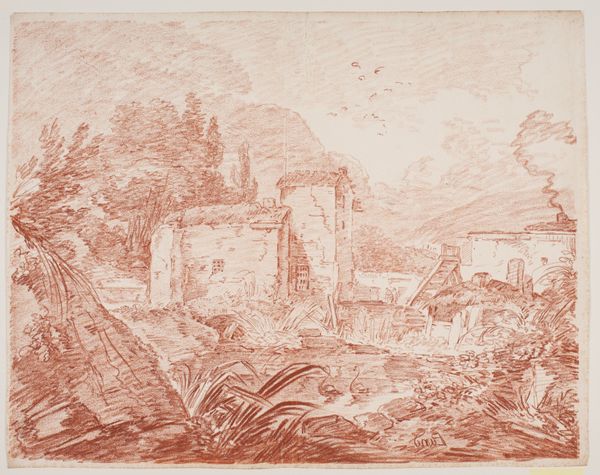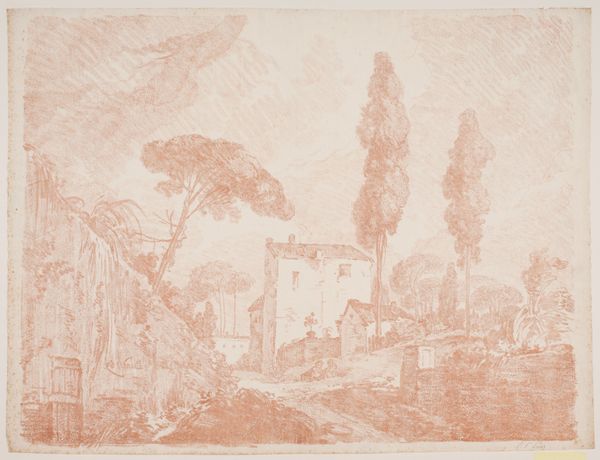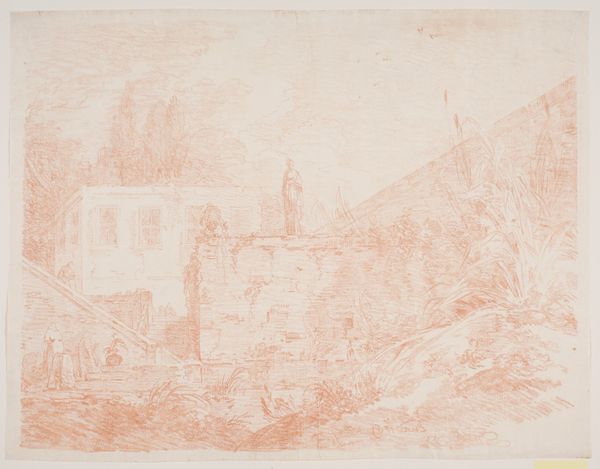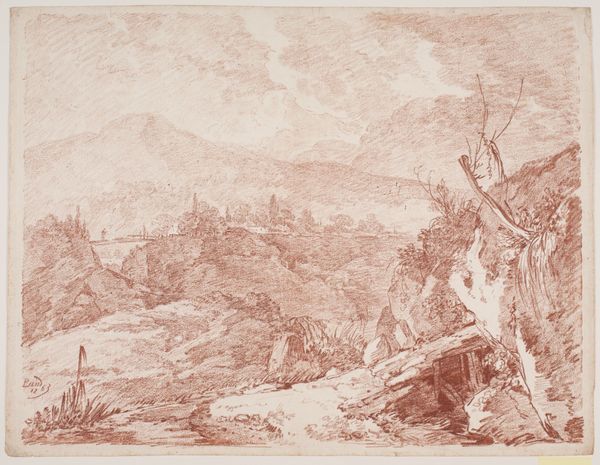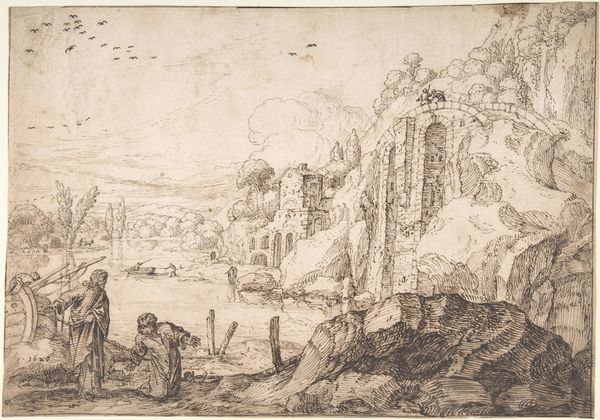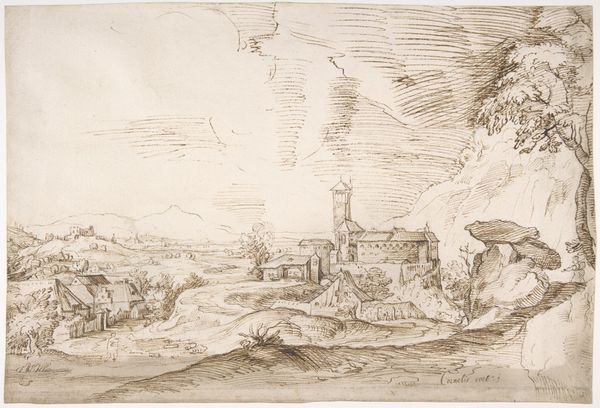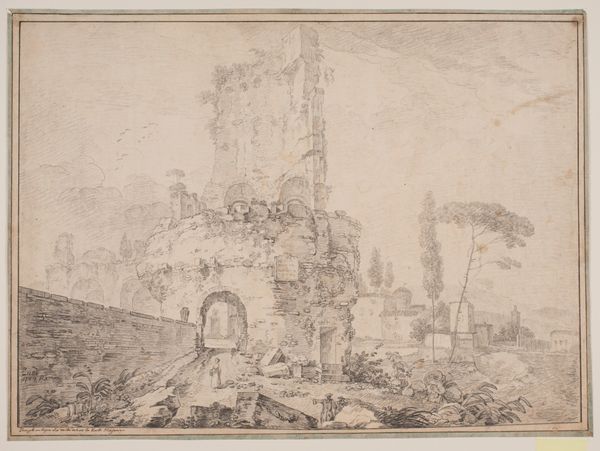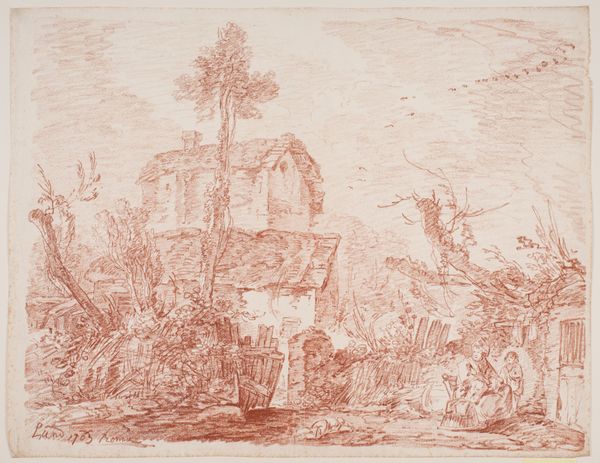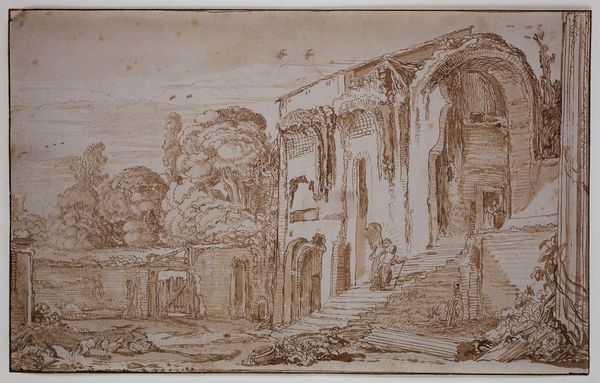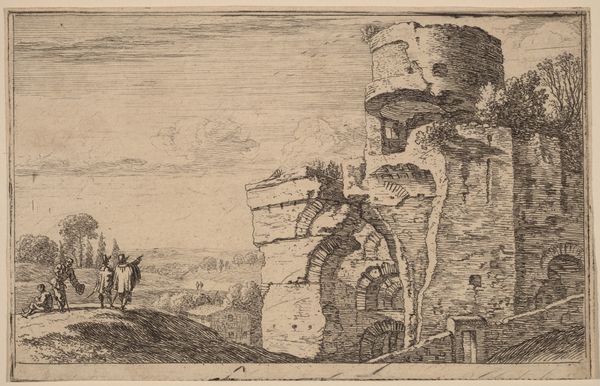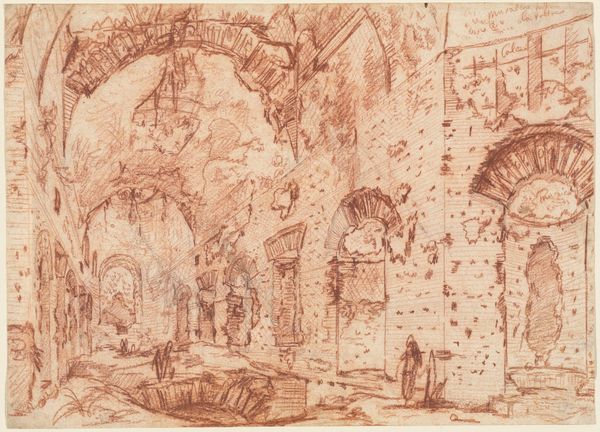
Dimensions: 419 mm (height) x 556 mm (width) (bladmaal)
Curator: Let’s discuss Jens Petersen Lund’s 1763 drawing, “Italiensk fantasilandskab,” or “Italian Fantasy Landscape,” held here at the SMK. Editor: It's quite striking! An immediate feeling of warmth, both in the sepia tones and the depicted scene. There's a sense of serene dilapidation, structures fading harmoniously into the landscape. Curator: Note how Lund, using primarily pen and ink, constructs depth and form through intricate cross-hatching. Observe how the architecture is not simply rendered representationally, but becomes a series of structured planes, defined by shadow and light. This creates a very layered viewing experience. Editor: And the ruins themselves, quite prevalent, seem to be charged with symbolism! Italy, after all, represents for the northern European imagination the legacy of the classical world but it's decaying; there is that nostalgic feeling so often associated with the aesthetic of Romanticism. Curator: Absolutely. We see visual indicators from Academic Art incorporated as well. It synthesizes structure and idealization. Consider, too, how the perspective leads the eye—the arrangement is less a representation of reality, and more of a conscious arrangement of shapes. Editor: The small figures add a nice human element; however, I can't quite be sure what those three persons are meant to symbolize. The architecture overshadows any implied narrative they may invoke. Curator: It underscores the formal impact as well, as we, the viewers, confront scale when seeing those details. Without it, the dimensions would perhaps remain elusive. It solidifies spatial relationship as a concrete part of experiencing the artwork. Editor: Indeed! In looking at this work, my mind wanders through ruins and histories of forgotten realms, and also thinks a lot about nostalgia! The human stories embedded within decaying structures. Curator: The beauty of visual structures mirroring time's passage, perhaps. Editor: Definitely. It all boils down to emotional resonance and our interpretations when confronted with symbols of the past, really.
Comments
No comments
Be the first to comment and join the conversation on the ultimate creative platform.
